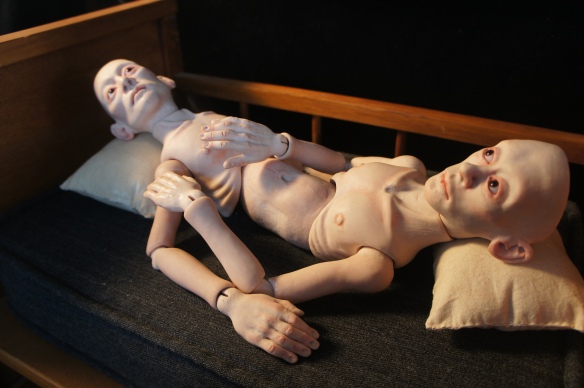I am bone tired. Last week we took down our installation ‘This House, my Body’.
The big house that we occupied and crafted for three weeks now stands quiet and empty once again. As our artworks are consigned to new homes and storage, the building goes on to house someone else’s creative endeavour, while outside, the Pepperberry tree nods in the wind and magpies carol.
For four days we invited people to experience an immersive installation space we had created inside a disused railway station building in Central Victoria, the Newstead Railway Arts Hub.

Newstead Railway Arts Hub
Outlined below is a rough map of the spaces of the installation.
Main Room.
“…I see it now, the way it appeared to my child’s eye, it is not a building, but quite dissolved and distributed inside me: here one room, there another, and here a bit of corridor … conserved in me in fragmentary form…”
Rainer Maria Rilke
On the walls of this room a series of portraits or emanations – faces emerging from the surfaces of broken mortar, peeling wallpaper. In the centre of the room stands a human sized figure illuminated on a light box, prone, deep cracks and fissures revealing broken brickwork where the heart might lie, his body as chipped and fragmented as a china doll. In another corner a whitened figure looms out of darkness, abstracted by projections of foliage, broken hearths and piles of detritus – the body becoming a bright, unknowable thing, a ruined building, broken window, site of decay and regeneration. Somewhere, almost imperceptible a low hum can be heard, a cello note, the light clink of crockery.

The main room

From the “Emanations’ series, a merging of diffuse portraits combined with the details of derelict buildings. Photo by R.Guy

Stooping, their light lifts the lids upon my eyes. “Safe! safe! safe!” the pulse of the house beats wildly. Waking, I cry “Oh, is this your buried treasure? The light in the heart.”
Virginia Woolf
The Cellar.
Beneath the floor, in a cellar, a wayward set of steps descends to a dirt floor. In one corner, a cracked, banished doll, faces a wall – lonely as the recesses of childhood we discard or bury, her frock, crisp as shame.
”…[you doll]….who let our most flooding feelings become matter in you–a perfidious, indifferent, unbreakable thing…lying around in our earliest uncanny loneliness”
Rainer Maria Rilke

the cellar beneath the gallery space – the placement of the doll meant she only came into view as you walked towards the glass covered aperture in the floor –

The aperture leading to the cellar.
Crying Room.
Behind another curtain a cluster of small porcelain houses made from body impressions, tilt and huddle in the alcove of a blackened fireplace. Illuminated by strings of tiny lights, they glow quietly, a buttery hue, warm as blood beneath the skin, while above them a naked, spectral figure stretches and dances. Caked in cracking clay, his skin tone is red against white, his mouth, florid as a rose, gapes wordlessly. All you can hear is the whine of dissonant chords, slowed and unspooling, and the quiet, plaintive sobbing of a woman somewhere, in some private, long forgotten moment of grief. On a plinth, two porcelain houses configured of cast hands hold a torrent of streaming red threads descending from a canopy above. The threads, like spindly capillaries, are connected to the stark crowns of dead bushes, suspended, dry sticks, branching like neural pathways.
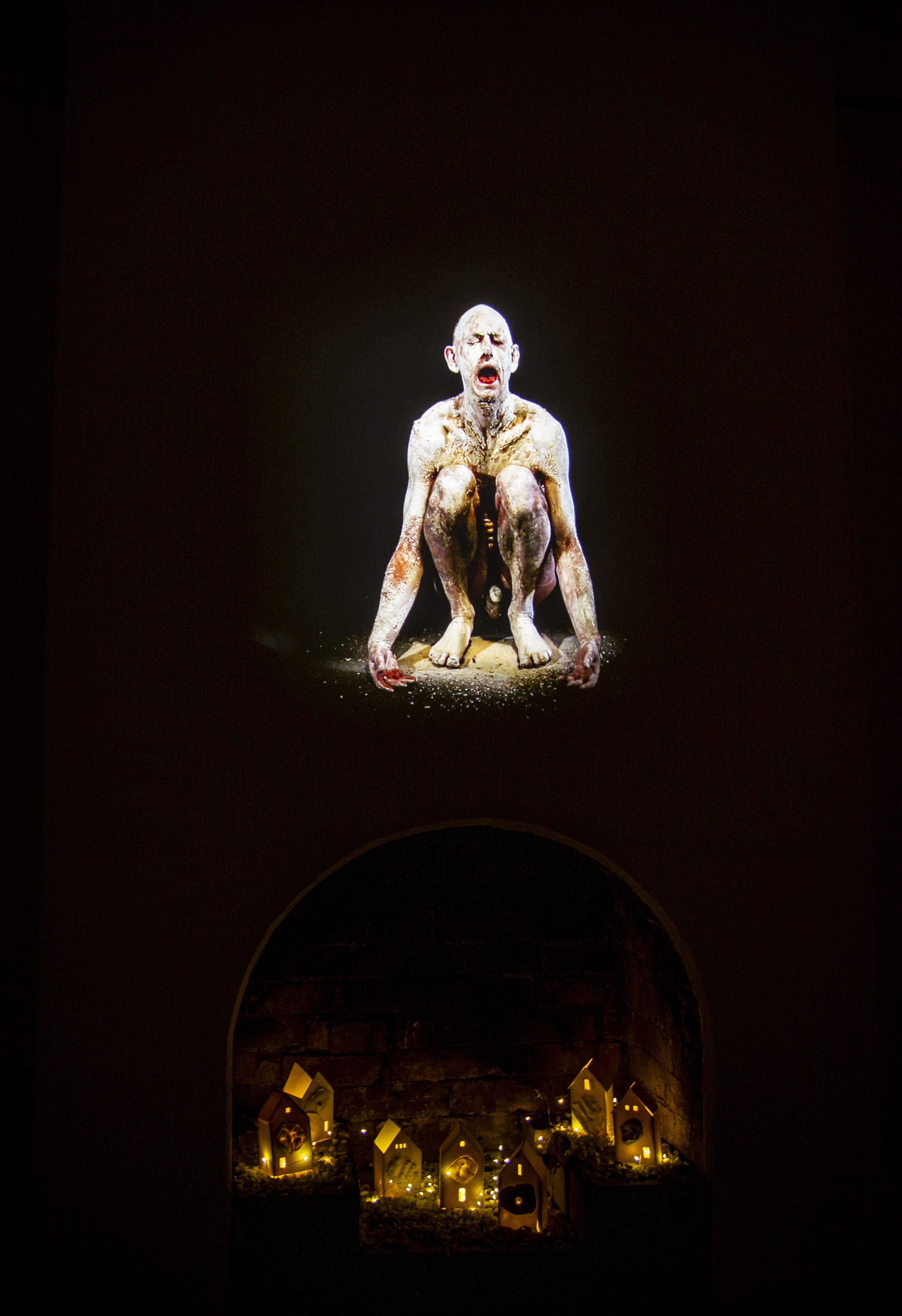
The crier projected onto the wall above the alcove of illuminated porcelain ‘body houses’

detail of the porcelain houses made from slabs and cast body parts, objects by Rachael Guy, photo Leonie Van Eyk

detail of porcelain objects connected to red thread
Poets Room.

Poet Anna Fern as she appears in This House, My Body short films.
For this part of the project I made a call out to 19 poets (including myself) to write on the theme of ‘This House, My Body’. Their task had four parts; first, to write an aspect/memory/observation about what it was to inhabit their particular body/house, then to be recorded reading their poetry as audio. Next we photographed each poet behind a sheet of diffuser film – and finally, filmed them listening back to the recording of their own poem. Each poet was asked to wear black and seated on a chair before a black velvet curtain beneath theatre lighting. They were then filmed as they listened to their own recording by my collaborator Leonie Van Eyk. The end result was 19 short films where the viewer watches the poet’s face and hands in minute detail as their words are heard. The films are compellingly intimate, the floating faces do not compete for our attention with the words, but rather float in unison, a chorus of intimacy – unguarded, forensic, yet tender and candid. It was a great privilege to work with people in such a raw space of disclosure and examination – and given I was asking such bravery of others, I felt it was only fair that I subject myself to the same process in order to sense what it might feel like for others. I too, appear in film, my eyes bright with fear, my face ever so slightly contorted at the strangeness of hearing my own voice – my hands, restless.
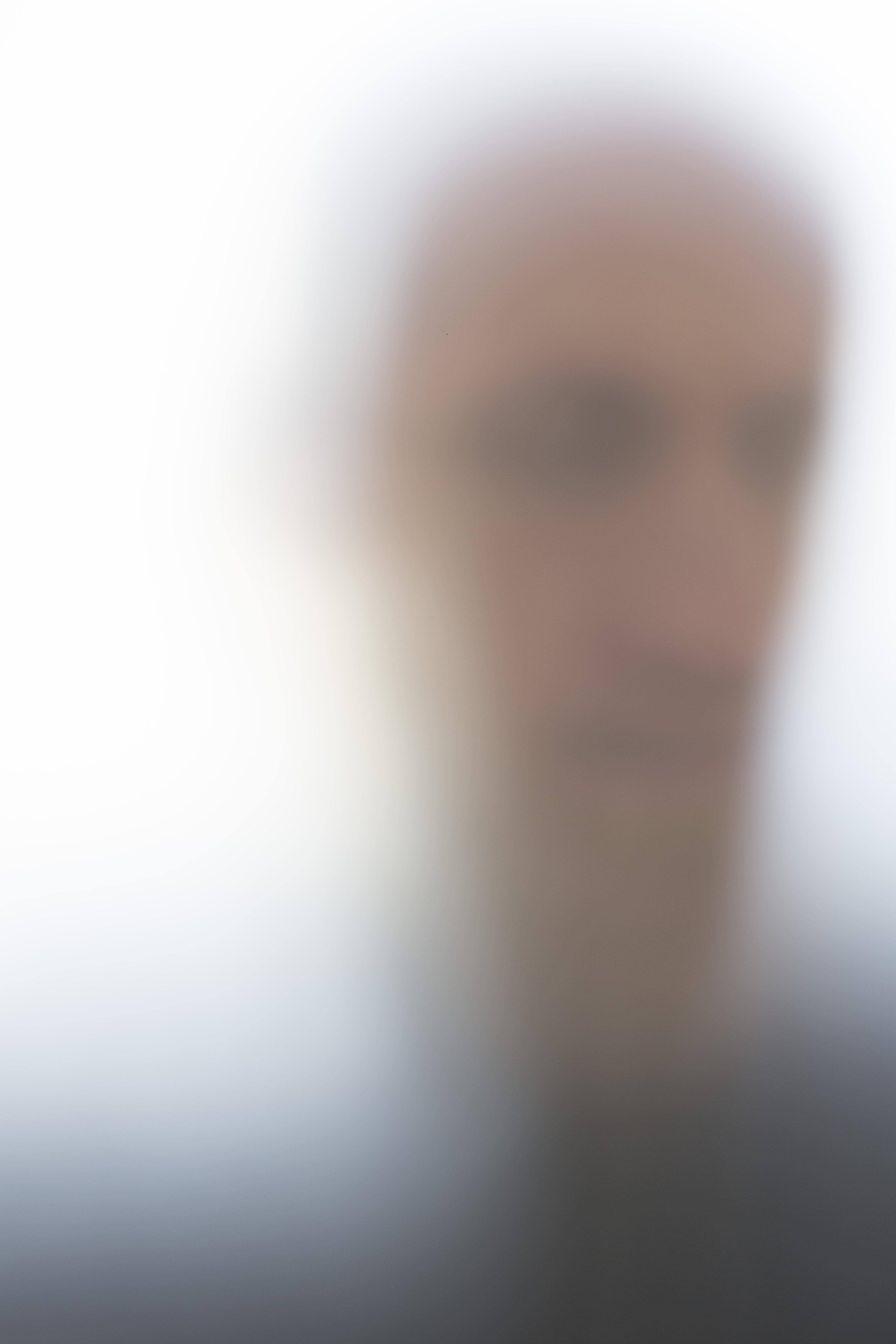
One of the ‘spirit’ portraits, taken from behind diffuser film. These portraits formed the basis for the ‘Emanations’ series.
Insomnia Room.
The last space in our installation is a large room behind a black curtain. Inside stands a cast iron bed, strewn with old lace and draped with a mosquito net. Projected through the net and onto the wall behind the bed, a lone, spasmodic sleeper hovers. She lies fitful on the threshold between waking and sleeping. Delicate as a moth pinned to the dark of night, her restlessness twitches and reverberates. Anxiety blooms in the dark recesses of the night mind – we gaze upon this sleeper, vulnerable, hovering – does she feel our gaze as intrusion – or is she held by it, wrapped in the soft cradle of our attention?
To make this film Leonie and I worked with performer Samantha Bews who patiently submitted to us moving her hair, dress and body incrementally to create, strange sequences of uncanny puppet-like movement to highlight the discomfort of insomnia. These sequences were then interspersed with stills taken as Samantha improvised on the theme of sleeplessness, rolling, arching and folding. We coupled the final film with an exquisite, disquieting chiming, nursery-like track by Jóhann Jóhannsson
Now you hear what the house has to say.
Pipes clanking, water running in the dark,
the mortgaged walls shifting in discomfort,
and voices mounting in an endless drone
of small complaints like the sounds of a family
that year by year you’ve learned how to ignore…
How many voices have escaped you until now,
the venting furnace, the floorboards underfoot,
the steady accusations of the clock
numbering the minutes no one will mark.
The terrible clarity this moment brings,
the useless insight, the unbroken dark.
from Insomnia, Dana Gioia

‘Night Music’ – a photographic triptych consisting of stills that made up the sequence for the insomnia film. Videography by Leonie Van Eyk
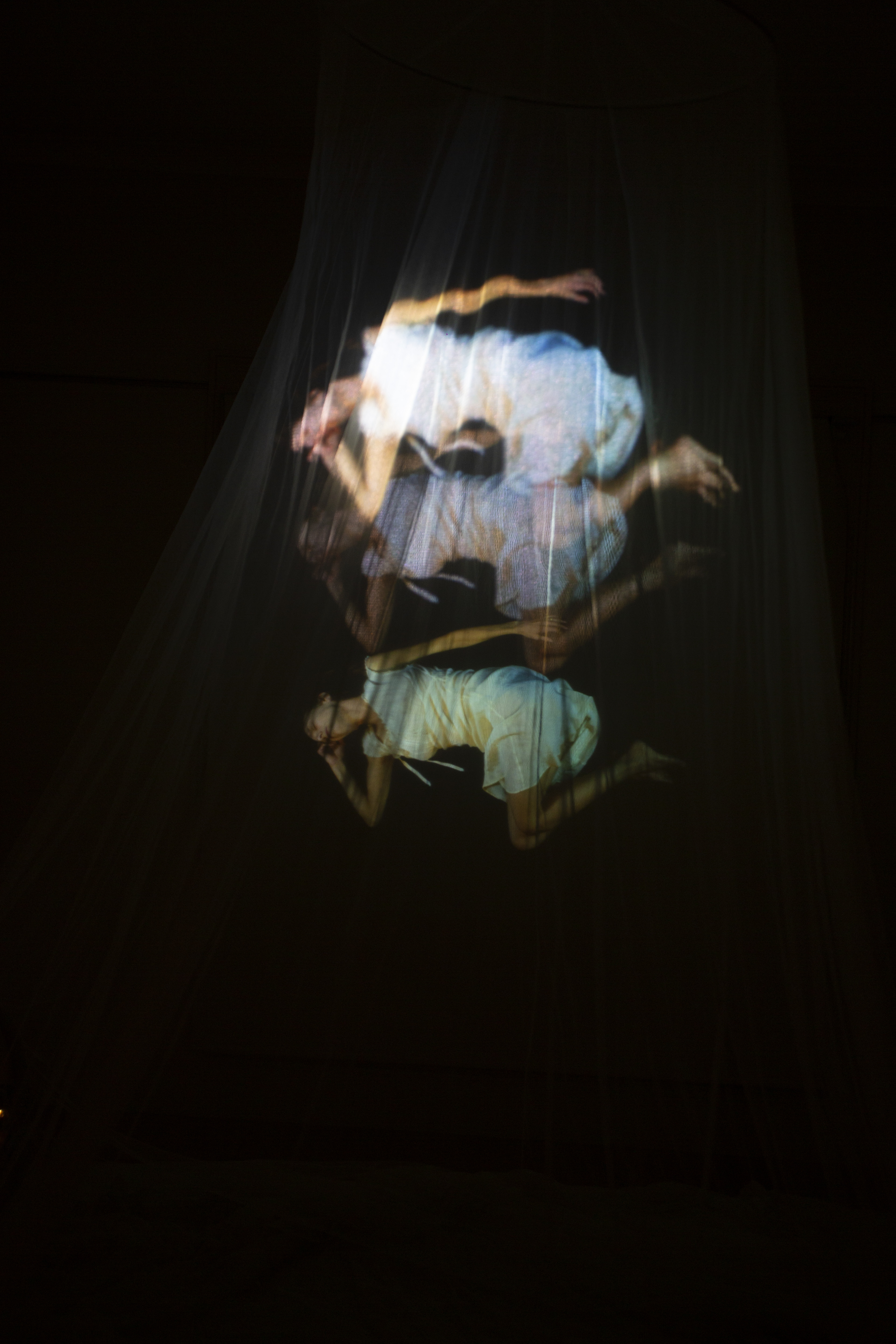
the film projected onto a mosquito net – photos by L.Van Eyk
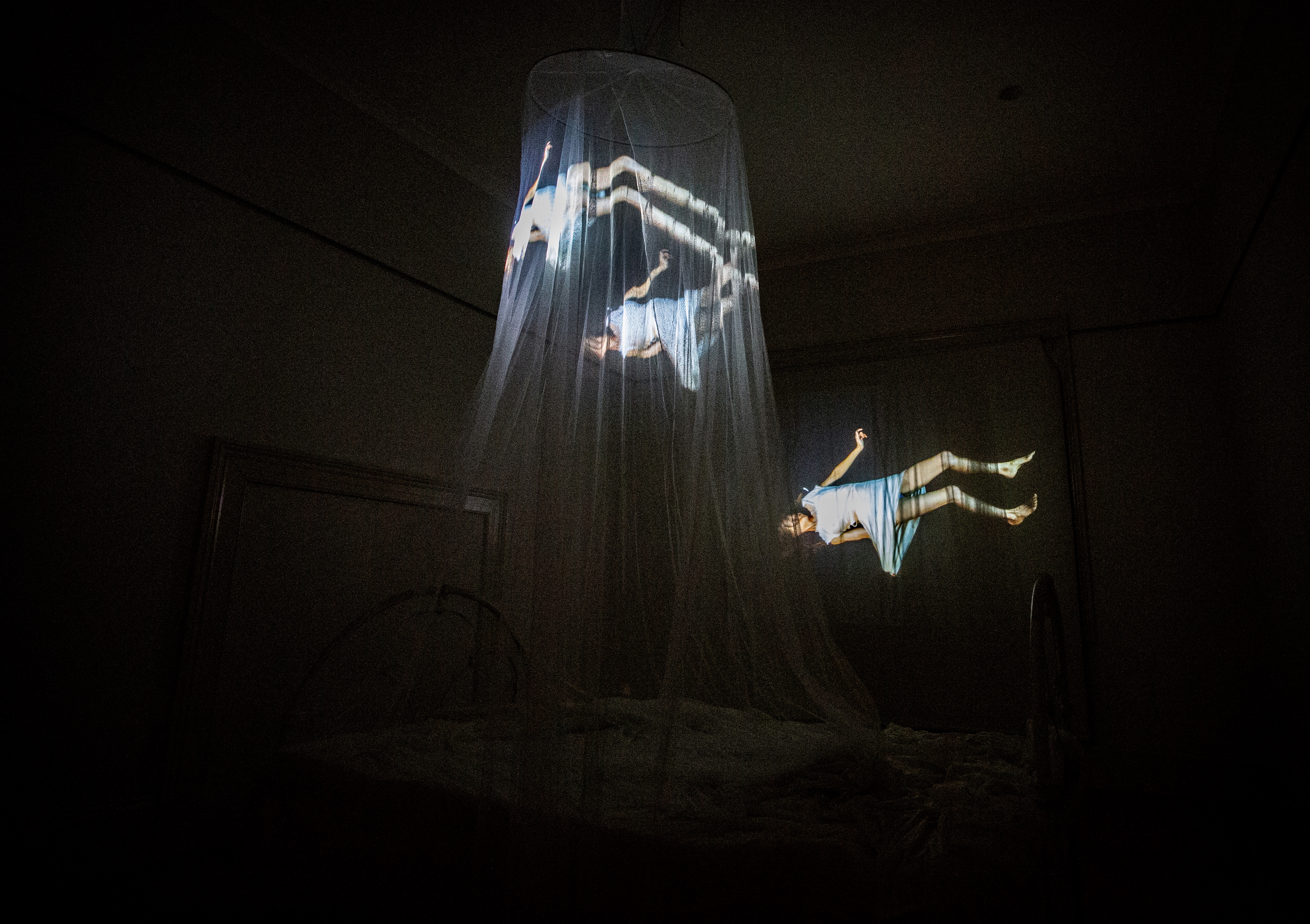
a wider view of the canopy, video and bed in situ
One of the key texts that underpinned the process of making this installation was ‘The Poetics of Space’, Gaston Bachelard. Such a rich compendium of poetic quotes, tangential roaming within the intimate spaces of architecture, memory, and the phenomenology of what it is to inhabit spaces and bodies served as a brilliant spur and touch stone as we navigated our way through the many potential directions of this project.
Another fascinating source was this illustration The House of the Body, an allegorical design comparing the organs of the body to the divisions of a house, from Cohn’s Ma’aseh Toviyyah (1707)

Polish-Jewish physician Tobias Cohn published a series of eight books called Ma’aseh Toviyyah (Work of Tobias). Each volume focused on a field of knowledge (Volume one: Theology, Volume Two: Astronomy, Volume Three: Medicine…). In the third volume Cohn illustrated the human body side-by-side with a house in order to liken both structures.
~
This project consisted of words, pictures and film. The installation space held many hours of creative labour, 8 or more months of dreaming, scribbling, laughing, disagreement and making. Leonie and I clambered into ruined houses, photographed the nooks and dust, we took people’s portraits and filmed and recorded poets words. We held people in their vulnerability during the process of making this work and supported one another also. We listened intently to domestic sounds, experimented with recording the ordinary sounds of the bodily (snoring, sobbing, breathing) and the domestic (washing up, creaking hinges and humming fridges) – and worked with sound artist Rose Turtle Ertler to refine the sound for the show. We reflected on our own embodiments and on our own houses and sense of belonging and impermanence.
“None of us reflects that someday he must depart from this house of life; just so old tenants are kept from moving by fondness for a particular place and by custom, even in spite of ill-treatment. Would you be free from the restraint of your body? Live in it as if you were about to leave it. Keep thinking of the fact that some day you will be deprived of this tenure; then you will be braver against the necessity of departing.”
Seneca
They say it takes a village to raise a child – it also takes a village to incubate and grow an installation – I am deeply indebted to the many who helped bring this work to fruition.
The Guest House
This being human is a guest house.
Every morning a new arrival.
A joy, a depression, a meanness,
some momentary awareness comes
as an unexpected visitor.
Welcome and entertain them all!
Even if they are a crowd of sorrows,
who violently sweep your house
empty of its furniture,
still, treat each guest honourably.
He may be clearing you out
for some new delight.
The dark thought, the shame, the malice.
meet them at the door laughing and invite them in.
Rumi
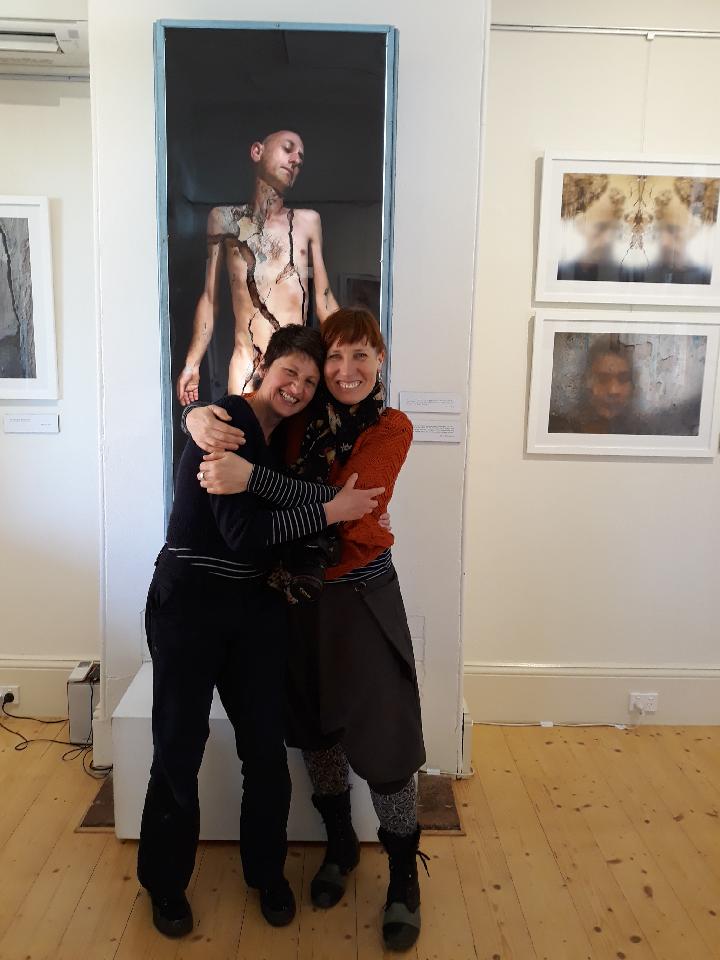
























 “None of us reflects that some day he must depart from this house of life; just as old tenants are kept from moving by fondness for a particular place and by custom, even in spite of ill-treatment.
“None of us reflects that some day he must depart from this house of life; just as old tenants are kept from moving by fondness for a particular place and by custom, even in spite of ill-treatment. 











